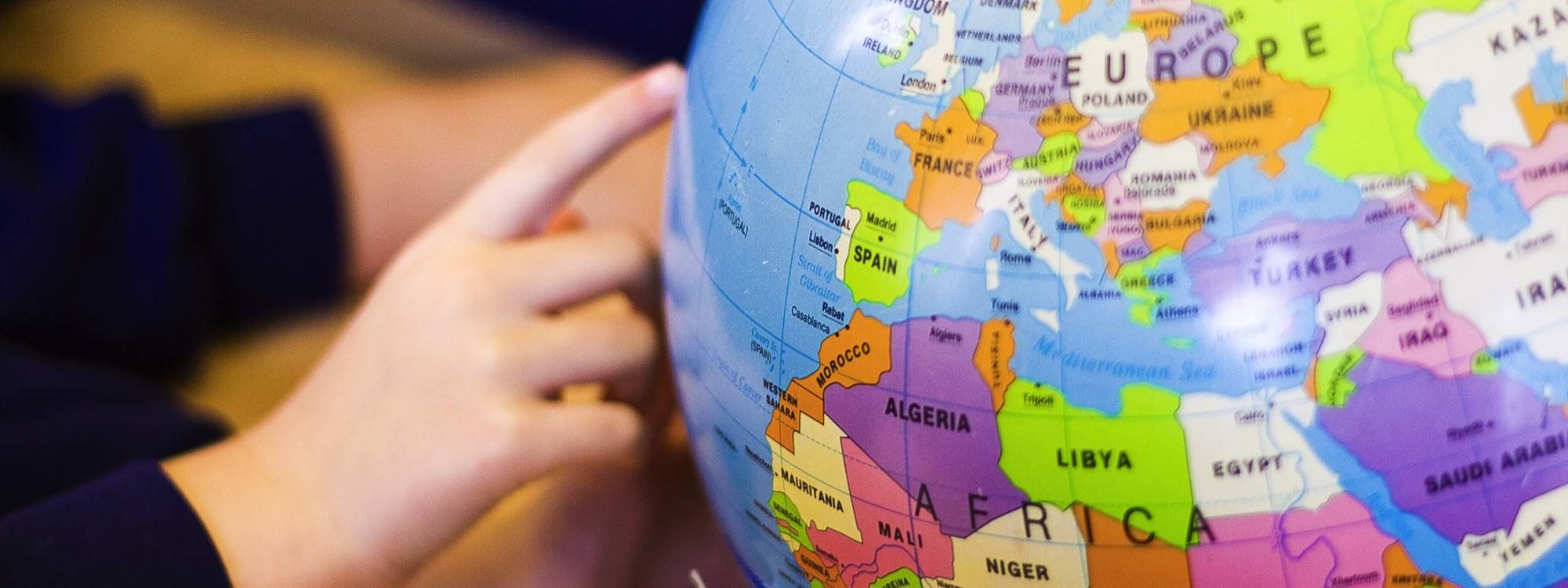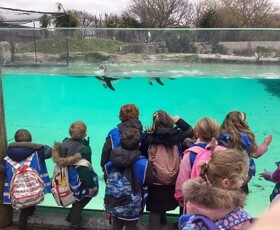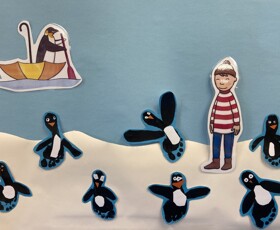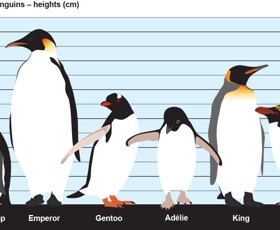Year 1
Welcome to Year 1.
Click the link for our Welcome Presentation: Powerpoint.
The Year One Teachers: Mrs Sutton Y1S and Miss Jones and Miss Hulme Y1JH
Year One Support Staff: Miss Gray (all day), Mrs O (all day) and Miss Valente (interventions 2 afternoons)
PPA Cover: Miss Friesener and Sports Coaching NW
PE will be one session on Tuesday (Sports Coaching NW) for all Year 1.
The other session will be on Friday Y1JH and on a Monday for Y1S.
Summer 1
In English we are reading 'Toys in Space.' We are continuing to use adjectives in our writing and lengthening our sentences by using 'and'. We will also use comparative language by adding 'er' or 'est to words. The children will also be taught how the prefix 'un' changes the meaning of words. By now we should be consistently using capital letters and full stops correctly. We should be sitting our letters on the line with clear finger spaces to separate words.
In handwriting we will be introducing diagonal joins.
In DT we are looking at mechanisms and will be making toy cars.
In Maths we will finish our learning on measuring by looking at Mass & Capacity. We will then move onto Multiplication & Division, including counting in 2s, 5s & 10s and making and sharing groups.
In Science we will learning about Materials and their different properties.
In History we are learning about Toys From the Past. This will link with our trip to Legoland and the visit from Nantwich Museum.
Our PSHE topic this half term is: Relationships.
In RE we have posed the question: How do know that babies are special?
Summer Term Trips
Legoland: Thursday 9th May
Nantwich Museum visit to school (toy dress up day): Tuesday 21st May
Long Term Plan
 Year 1 Long Term Plan
Year 1 Long Term Plan
|
|
Autumn |
Spring |
Summer |
|||
|
Topic:
|
From Antarctica to Africa.
How do the continents differ? Who found the continents?
|
Our United Kingdom
What lives in our country? Who has ruled the land? |
Terrific Toys
How have toys changed? How do they move? |
|||
|
English |
Autumn 1: Lost and Found by Oliver Jeffers Outcome - Fiction: adventure story based on the structure of the text Autumn 2: Nibbles the Book Monster by Emma Yarlett Outcome - Recount: diary entry
|
Spring 1: The Lion Inside by Rachel Bright Outcome - Fiction: story based on the structure of the text Spring 2: The Curious Case Of The Missing Mammoth by Ellie Hattie Outcome - Fiction: story based on the structure of the text |
Summer 1: Toys in Space by Mini Grey Outcome - Fiction: story based on the structure of the text Summer 2: Goldilocks and Just The One Bear. by Leigh Hodgkinson Outcome - Fiction: story based on the structure of the text
|
|||
|
Maths |
Autumn 1 Place value (within 10) Addition and subtraction (within 10) |
Autumn 2 Shape Place value (within 20) |
Spring 1 Addition and subtraction (within 20) Place value (within 50) 2,5,10 times tables |
Spring 2 Length and height Weight and volume |
Summer 1 Multiplication and division Fractions Position and direction |
Summer 2 Place value within 100 Money Time |
|
Science |
Animals including Humans - Humans identify, name, draw and label the basic parts of the human body and say which part of the body is associated with each sense |
Seasonal Changes (Autumn Winter) Observe changes across the 4 seasons observe and describe weather associated with the seasons and how day length varies
|
Animals including Humans - Animals identify and name a variety of common animals including fish, amphibians, reptiles, birds and mammals identify and name a variety of common animals that are carnivores, herbivores and omnivores describe and compare the structure of a variety of common animals (fish, amphibians, reptiles, birds and mammals including pets)
|
Seasonal Changes (Spring Summer) observe changes across the 4 seasons observe and describe weather associated with the seasons and how day length varies Summer safety.
|
Everyday Materials Distinguish between an object and the material from which it is made identify and name a variety of everyday materials, including wood, plastic, glass, metal, water, and rock describe the simple physical properties of a variety of everyday materials compare and group together a variety of everyday materials on the basis of their simple physical properties |
UK Plants identify and name a variety of common wild and garden plants from the UK, including deciduous and evergreen trees identify and describe the basic structure of a variety of common flowering plants, including trees
|
|
History |
Exciting Explorers Famous explorers who have explored the continents. NC: Learn about the lives of significant individuals in the past who have contributed to national and international achievements, some should be used to compare aspects of life in different periods
|
Kings and Queens Learn about the lives of significant individuals in the past who have contributed to national and international achievements, some should be used to compare aspects of life in different periods Sequence events in their own lives and the lives on monarchs studied. Begin to position monarchs/ the time period during which they reigned on a simple timeline. Become familiar with phrases to support chronological understanding eg. 30-40 years ago = around the time my parents were born, etc.
|
Terrific Toys Changes in Living history- Toys changes within living memory – where appropriate, these should be used to reveal aspects of change in national life Sort & sequence objects (ie. Toys) from distinctly different periods of time. Match objects to people from different ages. |
|||
|
Geography |
Comparing Continents Name and locate the world’s seven continents and five oceans. Understand geographical similarities and differences through studying the human and physical geography of a small area of the United Kingdom, and of a small area in a contrasting non-European country. Use basic geographical vocabulary to refer to: Key physical features, including season and weather Identify seasonal and daily weather patterns in the United Kingdom. Identify the location of hot and cold areas of the world in relation to the Equator and the North and South Poles
|
The United Kingdom Name, locate and identify characteristics of the four countries and capital cities of the United Kingdom and its surrounding seas. Use world maps, atlases and globes to identify the United Kingdom and its countries. Understand geographical similarities and differences through studying the human and physical geography of a small area of the United Kingdom, and of a small area in a contrasting non-European country.
|
Making Maps Use simple fieldwork and observational skills to study the geography of their school and its grounds and the key human and physical features of its surrounding environment. Use basic geographical vocabulary to refer to: Key physical features, including forest, hill, mountain, soil, vegetation. Key human features, including city, town, village, factory, farm, house, office. Use simple compass directions (North, South, East and West) and locational and directional language [for example, near and far; left and right], to direct toys (Beebots)
|
|||
|
D&T |
Structures - Constructing a Windmill Design - Learn the importance of a clear design criteria, and begin to discuss as a class the design criteria for this project Including individual preferences and requirements in a design in discussion with the teacher Make - Make stable structures (with support where necessary) using a variety of materials As a class, learn how to turn 2D nets into 3D structures Following instructions to cut and assemble the supporting structure of a windmill Making functioning turbines and axles Technical Knowledge: Understand that the shape of materials can be changed to improve the strength and stiffness of structures To understand that cylinders are a strong type of structure (e.g. the main shape used for windmills and lighthouses) To understand why axles are used in structures
|
Textiles: Hand puppets Design : Using a template to create a design for a puppet Explore a range of puppets/images of puppets to develop own ideas Make - Cutting fabric neatly with scissors Using joining methods to decorate a puppet In discussion with the teacher, sequence steps for construction Evaluate -Understand that ‘joining technique’ means connecting two pieces of material together To know that there are various temporary methods of joining fabric by using staples. glue or pins To understand that a template (or fabric pattern) is used to cut out the same shape multiple times To know that drawing a design idea is useful to see how an idea will look |
Mechanisms -Making moving toys. Design: Work in a group to design a vehicle that includes wheels, axles and axle holders, which will allow the wheels to move As part of a group, create clearly labelled drawings which illustrate movement Make: Select a range of tools and equipment in discussion with the teacher Work as a group to adapt mechanisms Technical knowledge: Understand wheels are round to rotate/move To understand that for a wheel to move it must be attached to a rotating axle To know that an axle moves within an axle holder fixed to the vehicle or toy |
|||
|
Art |
Spirals Using drawing, collage and mark-making to explore spirals. Introducing sketchbooks. |
Making Birds Sculptural project beginning with making drawings from observation, exploring media, and transforming the drawings from 2d to 3d to make a bird |
Simple Printmaking Explore simple ways to make a print. Use line, shape, colour and texture to explore pattern, sequencing and symmetry. |
|||
|
Music |
Jolly music Level 1 Autumn term: Lessons 1-5 |
Jolly music Level 1 Autumn term: Lessons 6-10
|
Jolly music Level 1 Spring term: Lessons 1-5
|
Jolly music Level 1 Spring term: Lessons 6-10
|
Jolly music Level 1 Summer term: Lessons 1-5
|
Jolly music Level 1 Summer term: Lessons 6-10
|
|
PSHE |
BM (Being Me in My World)
|
CD (Celebrating Difference)
|
DG (Dreams and Goals)
|
HM (Healthy Me)
|
RL (Relationships)
|
CM (Changing Me)
|
|
Computing |
Rising Stars Computing Scheme |
Rising Stars Computing Scheme |
Rising Stars Computing Scheme |
Rising Stars Computing Scheme |
Rising Stars Computing Scheme |
Rising Stars Computing Scheme |
|
PE (red and blue = coach taught, black = teacher taught) |
Fundamental Attacking & Defending
Fundamental Throwing & Catching |
Indoor Athletics
Fundamental Equipment handling skills (bat, racket etc) |
Tennis |
Fundamental Ball Skills
Fundamental Attack & Defence- uni-hoc |
Fundamental Throwing & Catching
Dance |
Fundamental Ball Skills- football
Outdoor Athletics |
|
RE |
Exploring a range of creation stories in imaginative ways, children present their own ideas using art and language. They consider how creation stories help some people understand what God is like.
|
What do some people believe God looks like? Exploring how other people understand God on Earth; considering different representations of God and understanding why this is challenging.
|
What is God's job? Investigating the roles of God through stories and sacred texts, children look at the things God does and what this means to different people.
|
Building on their understanding of creation stories, children explore beliefs about the relationship between humans and nature.
|
|
|
Useful Online Resources
Phonics
https://www.phonicsplay.co.uk/resources
https://www.teachyourmonstertoread.com/
Reading
https://www.activelearnprimary.co.uk/login?c=0 (BugClub)
https://www.oxfordowl.co.uk/for-home/find-a-book/library-page/ (Free ebooks)
Spelling
https://www.edshed.com/en-gb/login
Maths
https://www.topmarks.co.uk/Search.aspx?Subject=16








